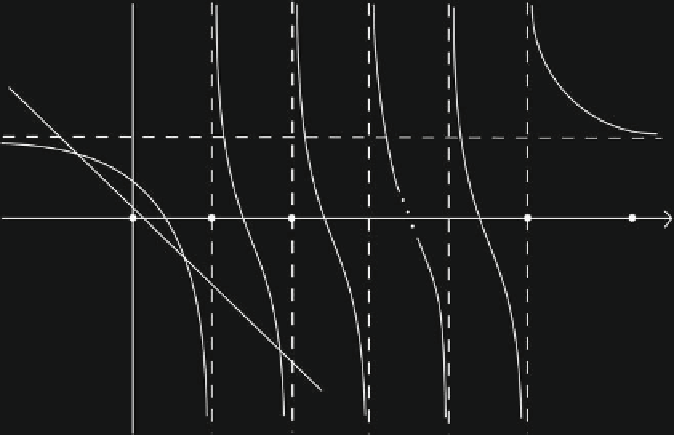Chemistry Reference
In-Depth Information
Assume now that the price function f and cost functions C
k
satisfy the con-
ditions (A)-(C) of concave oligopolies given at the beginning of Sect. 2.1. Then
1<r
k
0 for all k.Letg./ denote the left hand side of (4.45) and assume that
all a
k
>0 and the 1
a
k
.1
C
r
k
/ values are different, otherwise we can add the
terms with identical denominators similarly to (2.24). Clearly,
N
X
lim
g./
D
r
k
.a
k
C
ˇ
S
/
0;
!˙1
k
D
1
and it is positive unless all r
k
D
0, which case is excluded from discussion. Further-
more
lim
0
g./
D˙1
!
1
a
k
.1
C
r
k
/
˙
and
X
N
a
k
r
k
.1
.a
k
C
ˇ
S
/.1
C
r
k
//
.1
a
k
.1
C
r
k
/
/
2
g
0
./
D
<0
k
D
1
by assuming that for all k, .a
k
C
ˇ
S
/.1
C
r
k
/<1. The graph of g./ is shown
in Fig. 4.11, and notice that under this assumption all poles of g are positive and
below 1. Notice also that
1
−
a
1
(1
+
r
1
)
1
−
a
2
(1
+
r
2
)
1
−
a
S
(1
+
r
S
)
1
λ
0
β−λ
Fig. 4.11
The oligopoly model with intertemporal demand interaction and best reply dynamics
with adaptive expectations in the discrete time case. Graph of g./ the roots of which are the
eigenvalues of the Jacobian matrix

Search WWH ::

Custom Search